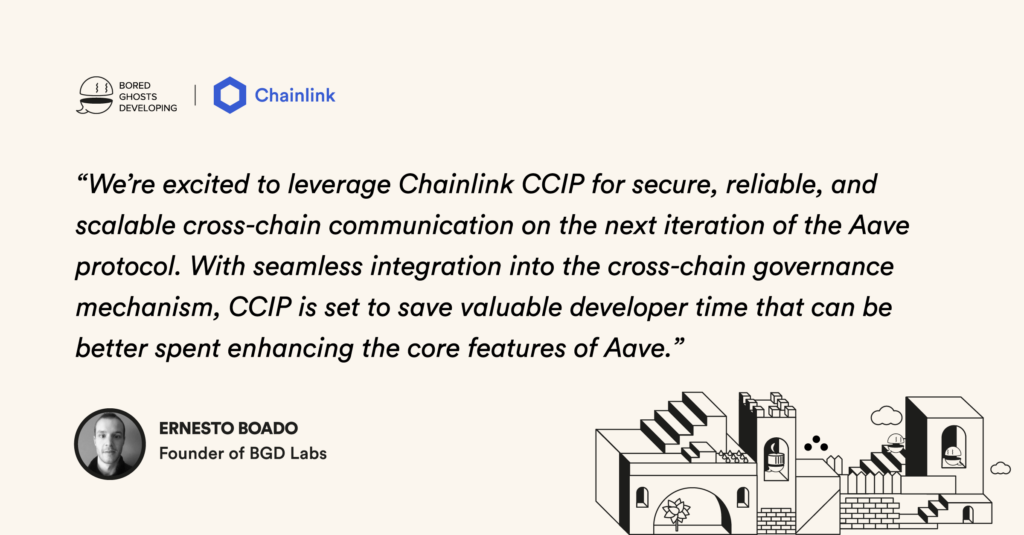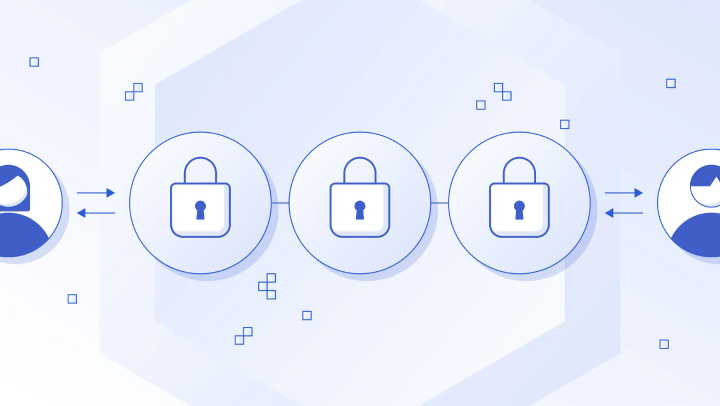Understanding Cross-Chain Token Transfers
Cross-chain token transfers are when tokens on one blockchain network are transferred to another chain, such as ETH being sent from Ethereum to Optimism.
Cross-chain token transfers unlock the multi-chain future of Web3. The design choices that blockchains make can give them unique advantages, such as high levels of decentralization for secure settlement, fast finality for high performance, or low-cost transactions for scalability. For Web3 to take advantage of all of these capabilities, it requires cross-chain token transfers.
Whether it’s cross-chain token transfers between private bank chains and public blockchains or layer 1s and layer 2s, secure and seamless interoperability is critical for unlocking the full potential of tokenized assets and the onchain economy. Now that the world’s largest financial institutions are actively adopting blockchain technology, trillions of dollars worth of tokenized assets are set to potentially flow onchain if they can access a secure interoperability standard.
In this post, we explore the different types of cross-chain token transfers and the burgeoning universal standard for blockchain interoperability.
<div class="educational-divider sections-divider"></div>
What Are Cross-Chain Token Transfers?
A cross-chain token transfer is when an asset on one blockchain network is sent to another chain, such as ETH being sent from Ethereum to Avalanche. This makes a token accessible across the onchain financial ecosystem, where it can be used as DeFi collateral, for payments, and more.
<div class="educational-divider sections-divider"></div>
Types of Cross-Chain Token Handling Mechanisms
Burn and Mint

A burn and mint token transfer simultaneously burns the token on the source chain and mints the same token on the destination chain, effectively transferring it from one blockchain to another. Tokens can be transferred back and forth between either chain using the same method.
Burn and mint is the most capital-efficient mechanism because it doesn’t require any tokens to be locked (unlike “lock and mint” or “lock and unlock” types). Eliminating the need for a token pool holding assets also mitigates the risk of a valuable pool of capital potentially being exploited by malicious actors.
Another key advantage is that burn and mint tokens are native assets on every supported blockchain. Consider the ease of using native USDC across all chains via Chainlink CCIP rather than various wrapped versions like USDC.e, USDC.bC, and axlUSDC. This avoids various UX friction points and can help mitigate some of the security vulnerabilities around wrapped tokens.
In order for a burn and mint token transfer to take place, the token’s contract must be natively deployed on both the source and destination chains and needs to support burn/mint functionality. Additionally, the cross-chain solution requires burn and mint privileges to enable cross-chain transfers. Maintaining the security standards of the underlying blockchain the tokens are issued on requires a cross-chain solution with comparable levels of security, reliability, and decentralization.
Lock and Unlock

The lock and unlock model is another common approach to bridging assets. It works by creating liquidity pools on both the source and destination blockchains. To transfer tokens cross-chain, assets are locked in the liquidity pool on the source chain and unlocked from the liquidity pool on the destination chain.
Oftentimes, liquidity providers are incentivized with rewards such as fee sharing to lock tokens on both sides of the bridge, making this method less capital-efficient than other cross-chain transfer types. To help access liquidity, cross-chain solutions can leverage existing native tokens in these pools rather than minting new versions.
While both the lock and unlock and lock and mint mechanisms are inherently more complex than the burn and mint method, all three handling mechanisms can be highly reliable and secure when powered by Chainlink CCIP.
Lock and Mint
A lock and mint token transfer involves having native tokens locked on the source chain (e.g., BTC), while a wrapped version of the token (e.g., WBTC) is minted on the destination chain. This transfer in reverse, from a wrapped token to the native token, is known as burn and unlock. The wrapped tokens (WBTC) are burned and the native tokens (BTC) are unlocked.
Because any token can be wrapped without additional functionality required in the token contract, the lock and mint mechanism is backward compatible with any token. This has helped the lock and mint transfer approach become very common.
The lock and mint mechanism can have various trade-offs:
- DeFi risk—Wrapped tokens can expose DeFi protocols accepting them to underlying smart contract risks that can lead to wrapped tokens becoming undercollateralized.
- Fragmented liquidity—Each bridge mints a different wrapped token, which results in multiple non-fungible versions of the same underlying asset. This splits liquidity across the DeFi ecosystem and makes it challenging for protocols to accept certain assets.
- Reduced transparency—Locking native tokens inside the lock and mint contract makes it harder for token issuers to track their assets across the multi-chain ecosystem.
In order to help mitigate these downsides, token issuers or a token’s community can use the industry-standard CCIP for token transfers.
<div class="educational-divider sections-divider"></div>
Secure Cross-Chain Token Transfers With Chainlink CCIP
Chainlink Cross-Chain Interoperability Protocol (CCIP) unlocks a new era of secure blockchain interoperability. Supporting burn and mint, lock and mint, and lock and unlock transfer mechanisms, CCIP is a highly secure, reliable, and easy-to-use solution for building cross-chain applications and services.
CCIP is being adopted as the industry standard as it’s purpose-built to support securefor cross-chain token transfers, featuring:
- Defense-in-depth security—CCIP’s consensus and transport layer is powered by Chainlink decentralized oracle networks, which have enabled over $10.5T in onchain transaction value.
- Rate limits—CCIP token transfers provide configurable rate limits for each token pool per lane. These configurable rate limits are set up in alignment with the token issuer and are a core component of the audited CCIP codebase—making them only available for CCIP token transfers. Additionally, all CCIP token transfers are secured by global rate limits that span across token pools to help ensure that every token’s rate limit cannot be maximally exploited in a worst-case scenario.
- Risk Management Network—When facilitating token transfers, CCIP’s Risk Management Network has access to additional transaction information (i.e. token, amount) that enables it to perform additional risk management processes. This cannot be implemented for arbitrary messaging because the Risk Management Network doesn’t interpret the contents of generalized messages. Additional transaction information can also enable more granular monitoring, targeted incident responses, and valuable transaction analytics for CCIP token transfers.
- Effortless integration and scalability—Through a single interface on a single blockchain, developers can integrate CCIP and access all supported blockchains. This enables projects to start transferring tokens cross-chain in a fraction of the time it would take to build a solution internally. Tokens transferred via CCIP are also highly composable, enabling advanced functionality to be built with them. CCIP provides audited token pool contracts that handle the complexity of burning/minting, locking/minting, or locking/unlocking tokens across chains. Importantly, token sponsors maintain full control over their token pool contract while using CCIP.
- Future-proof—CCIP is architected to support continuous updates, such as the integration of new blockchains, advanced functionalities, and new security features. This includes the Risk Management Network ruleset, which will evolve over time to include more advanced logic that will further help identify and mitigate risks.
Beyond token transfers, CCIP supports arbitrary messaging and programmable token transfers that power advanced use cases such as cross-chain NFTs, cross-chain gaming, and cross-chain data storage.
Token issuers are recommended to use CCIP’s Programmable Token Transfers to benefit from heavily audited token pool contracts, rate limiting capabilities, and additional risk management approaches while enhancing the composability of their token across other dApps and token bridges that are integrated with CCIP. Programmable Token Transfers not only enhance cross-chain token transfer security but also help token issuers save development costs and increase the utility of their token.
<div class="educational-divider sections-divider"></div>
Chainlink CCIP for Leading Financial Institutions and DeFi Protocols
Swift, Chainlink, and more than a dozen of the largest financial institutions and market infrastructure providers, including BNY Mellon, Citi, DTCC, and Euroclear, successfully demonstrated a secure and scalable way to transfer tokenized assets cross-chain using CCIP. In a separate project, Australian bank ANZ used CCIP to explore cross-chain settlement of tokenized assets.

CCIP is also rapidly being adopted as the premier cross-chain solution in DeFi markets. Already, Aave is using CCIP for cross-chain governance, and WEMIX has integrated CCIP as its exclusive cross-chain infrastructure.
CCIP doesn’t only enable interoperability within capital markets and DeFi, it connects them. Bringing the global financial system and Web3 together via a secure interoperability standard lays the path for potentially trillions of dollars worth of tokenized assets to flow onchain and grow the blockchain industry by an order of magnitude.
<div class="educational-divider sections-divider"></div>
Conclusion
In the increasingly multi-chain world of Web3, cross-chain token transfers will be fundamental to the liquidity, utility, and accessibility of tokenized assets. While it’s important for developers to understand the transfer types, abstracting the complexities away with CCIP Simplified Token Transfers enables them to easily build highly secure and scalable cross-chain applications right away. As the $2.8B+ of bridge exploits demonstrates, security is paramount for any cross-chain solution, and this is why CCIP’s unparalleled levels of security position make it the industry-standard blockchain interoperability solution across both capital markets and Web3.














